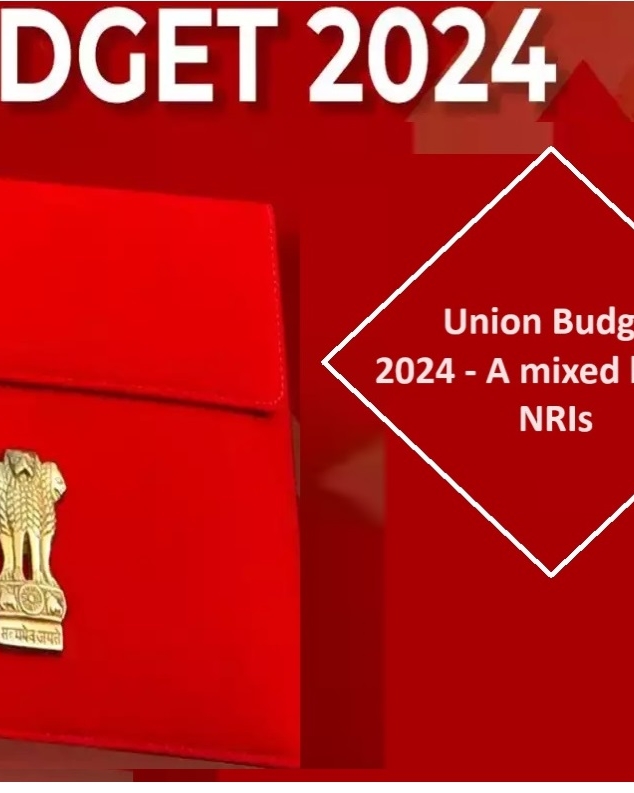CIRP: PREPARATION OF A RESOLUTION PLAN AND ITS APPROVAL
Authors: Sandeep Bhuraria, Senior Partner and Monish Surendran, Senior Associate at ZEUS Law
Published in Live Law on 11th June 2023
The object of the Insolvency and Bankruptcy Code, 2016 (“the Code”) is to provide an institutional framework for resolving debt-ridden companies, partnerships and individuals through a time bound process.
In the case of a company, an application can be filed by a creditor under Section 7 / 9 of the Code or by the company in distress, i.e., corporate debtor, under Section 10 of the Code before the National Company Law Tribunal (“NCLT”) for initiating the Corporate Insolvency Resolution Process (“CIRP”) of a corporate debtor. Once an application under Section 7, 9 or 10 is admitted, the CIRP proceedings of the corporate debtor is initiated and an Interim Resolution Professional (“IRP”) is appointed by the NCLT for the corporate debtor. The IRP carries out the public announcement and invites creditors of the corporate debtor to file their claims and thereafter, constitutes the Committee of Creditors (“CoC”) of the corporate debtor. The CoC then appoints a Resolution Professional (“RP”) in the first CoC Meeting of the Corporate Debtor.
Thereafter, the RP of the corporate debtor invites Prospective Resolution Applicants (“PRAs”) to revive the corporate debtor. The process initially starts from inviting PRAs to file an Expression of Interest (“EOI”) for securing eligibility to present a resolution plan for the corporate debtor and attains finality after an order is passed by the NCLT approving a resolution plan thereby reviving the corporate debtor with a new management. The said process is elaborated upon herein below:
- ISSUANCE OF INVITATION FOR SUBMISSION OF EXPRESSION OF INTEREST
1.1 The first step in attempting to revive the corporate debtor is the publishing of the invitation of EOI as per Regulation 36A of the Insolvency and Bankruptcy Board of India (Insolvency Resolution Process for Corporate Persons) Regulations, 2016 (“CIRP Regulations”) thereby inviting eligible PRAs to submit their resolution plans. The invitation for EOI is required to be made in Form G and not later than sixtieth day from the insolvency commencement date in an English newspaper and one vernacular newspaper with wide circulation at the location of the registered office and principal office of the corporate debtor. Form G is also required to be published on the website of the corporate debtor (if any), website of the IBBI, i.e., https://ibbi.gov.in/, and in any other manner as decided by the CoC. The invitation for EOI is required to provide the following:
a. Where the detailed invitation for EOI can be downloaded or obtained from (as the case may be)
b. Provide the last date for submission of EOI which shall not be less than 15 days from the date of issuance of the detailed EOI
1.2 Further, the detailed Invitation for EOI shall provide for:
- Criteria for being classified as a PRA which is approved by the CoC in accordance with Section 25(2) of the Code taking into account the complexity and scale of operations of the business of the corporate debtor. The eligibility criteria for becoming a PRA is covered under the commercial wisdom of the CoC and hence, the same cannot be questioned even by the NCLT, which has also been held by the NCLAT in the matter of Kannan Tiruvengandam V/s M.K. Shah Exports Ltd. and Ors.
- Ineligibility norms provided under Section 29A of the Code for PRAs.
- Basic information about the corporate debtor which may be required by the PRA for submitting an EOI.
1.3 The invitation for EOI cannot request for payment of any fee or any non-refundable deposit for submission of an EOI.
- SUBMISSION OF EXPRESSION OF INTEREST
2.1 As per Regulation 36A of the CIRP Regulations, the EOI provided by the eligible PRAs is required to be unconditional and accompanied by the following undertakings:
- That the PRA meets the criteria specified by the CoC for submitting a resolution plan along with relevant records evidencing the same;
- That the PRA does not suffer from any ineligibility under Section 29A along with relevant records evidencing the same;
- That if at any time period during the CIRP proceedings of the corporate debtor, the PRA becomes ineligible then the PRA shall forthwith intimate the RP;
- That the information given in the EOI is true and correct and further stating that in case of discovery of any false information, the PRA shall become ineligible and any amount submitted as refundable deposit shall be forfeited. Further, penal action under the Code shall also be attracted;
- That the PRA shall maintain confidentiality of the information provided by the RP and the PRA shall not utilise the said information to cause undue gain or undue loss to itself or any other person and shall comply with the requirements under Section 29(2) of the Code.
2.2 The EOI is required to be submitted within the time period given in the invitation for EOI. Further, as per Regulation 36A(6) of the CIRP Regulations, an EOI received after the time specified in the initiation for EOI is required to be rejected.
- PERUSAL OF EXPRESSION OF INTERESTS AND ISSUANCE OF LIST OF PROSPECTIVE RESOLUTION APPLICANTS
3.1 As per Regulation 36A(8) of the CIRP Regulations, the RP is required to conduct due diligence based on the material on record to establish that the PRA complies with:
- Provisions of Section 25(2)(h) of the Code which provide the eligibility norms that have been decided by the RP in consultation with the CoC;
- Provisions of 29A of the Code which specifies disqualifications;
- Other requirements as specified in the invitation for EOI.
3.2 After perusing the EOIs, as per Regulation 36A(10) of the CIRP Regulations, the RP is required to present a provisional list of PRAs to the CoC and all of the PRAs who submitted EOIs within 10 days of the last date of submission of EOIs. A 5 day window is granted for entertaining any objection to inclusion or exclusion of a PRA from the date of issuance of the provisional list of PRAs.
Within 5 days of the issuance of the provisional list, these provisional PRAs are required to be provided with the Information Memorandum (“IM”), Request for Resolution Plan (“RFRP”) for preparation of a resolution plan and the Evaluation Matrix (“EM”) which showcases the criteria for evaluating the resolution plans as per Resolution 36B of the CIRP Regulations.
3.3 After considering the objections pertaining to inclusion or exclusion of a PRA in the provisional list of PRAs, the RP is required to issue the final list of PRAs who shall be eligible to present a resolution plan for the corporate debtor, as per Regulation 36A(12) of the CIRP Regulations, within 10 days of the last date for receipt of objections.
- DOCUMENTS TO BE CONSIDERED WHILE PREPARING A RESOLUTION PLAN
In terms of Regulation 36B(1) of the CIRP Regulations, an IM, RFRP and an EM is required to be issued to every PRA in the provisional list within 5 days of the date of issuance of the provisional list of PRAs. These documents provide information pertaining to the corporate debtor for preparing a resolution plan for the corporate debtor along with the criteria that would be utilised to evaluate the resolution plan(s) that would be submitted by the PRAs.
- Information Memorandum
As per Section 29 of the Code, IM is a document prepared by the RP which contains relevant information pertaining to the corporate debtor which is essential for formulating a resolution plan for the corporate debtor. As per Regulation 36 of the CIRP Regulations, the IM is required to provide for:
- The assets and liabilities of the corporate debtor including contingent liabilities as on the date of the commencement of the CIRP proceedings of the corporate debtor along with the audited financial statements of the last two years and the provisional financial statements of the current year;
- List of creditors along with security interest held by them and their respective claimed amounts and the amounts that have been actually admitted;
- Particulars of debt owed to or from the corporate debtor to the related parties of the corporate debtor;
- Particulars of members or partners holding at least 1% stake in the corporate debtor;
- List of guarantees given by other persons in relation to debt owed by the corporate debtor. Further, specifying guarantors who are a related party;
- Details of ongoing litigations and investigations pending against the corporate debtor by the government and statutory authorities;
- Details of workers and employers along with the debt owed to them;
- Company overview and other factors which brings out the value as a going concern over and above the assets of the corporate debtor such as brought forward losses, input credit of GST, supply chain linkages, key customers, etc;
- Other information that may be relevant to the CoC.
According to Regulation 36 of the CIRP Regulations, the IM is required to be submitted to each member of the CoC by the RP within 95 days from the insolvency commencement date of the corporate debtor. As per Regulation 36(4) of the CIRP Regulation, the RP can only share the IM with a member of the CoC or the PRA, as the case may be, after receiving an undertaking ensuring confidentiality of the contents of the IM. Further, in the case of the PRA, as per Section 29(2) of the Code, the following undertaking is required to be given:
- to comply with provisions of law for the time being in force relating to confidentiality and insider trading;
- to protect any intellectual property of the corporate debtor that the PRA may have access to; and
- not to share relevant information with third parties unless the aforementioned conditions are complied with.
- Request for Resolution Plan
As per Regulation 36B(2) of the CIRP Regulations, the RFRP details the whole of the resolution process of the corporate debtor along with the corresponding timelines and also provides the manner for interaction between the RP and the PRA.
As per Regulation 36B(4A) of the CIRP Regulations, the RFRP is also required to mention that a performance security is required to be provided by the resolution applicant whose resolution plan would be approved by the NCLT which will be forfeited in case the resolution applicant fails to implement or contributes to the failure of implementation of the said resolution plan according to the terms of the resolution plan. The ‘performance security’ is the security which is specified in the RFRP with the approval of the CoC having regard to the nature of the resolution plan and the business of the corporate debtor.
As per Regulation 36B(4) of the CIRP Regulations, the RFRP should not request for any non-refundable deposit to be submitted along with the resolution plan.
- Evaluation Matrix
EM is defined under Regulation 2(ha) of the CIRP Regulations. It provides the manner and weightage of different elements of resolution plan on the basis of which the CoC evaluates resolution plans. The EM prepared by the RP is required to be approved by the CoC prior to its issuance to the PRAs. In light of the directive enshrined in Regulation 39(3)(a) of the CIRP Regulations, the CoC is required to evaluate the resolution plan(s) strictly according to the EM.
Any modification in the EM is deemed to be a fresh issue and would provide a minimum 30 day time period to submit resolution plan(s) as per Regulation 36B(5) of the CIRP Regulations.
- TIME LIMIT FOR SUBMISSION OF A RESOLUTION PLAN
The RFRP is required to provide a minimum 30 day time period to the PRAs to submit their resolution plan(s), as per Regulation 36B(3) of the CIRP Regulations.
According to Regulation 39(1B) of the CIRP Regulations, the CoC should not consider a resolution plan received after the time specified in the RFRP. However, with respect to submission of a resolution plan after the cut-off date, the Supreme Court in the matter of Kalpraj Dharamshi vs. Kotak Investment Advisors Limited & Anr. has held that the CoC can allow the late submission of a resolution plan as the commercial wisdom of the CoC cannot be intervened with.
Further, as per Regulation 36B(5) of the CIRP Regulations, any modification in the RFRP or the EM shall be deemed to be a fresh issue and shall be subject to the 30 day minimum time period as provided under Regulation 36B(3) of the CIRP Regulations.
If the resolution plans are not satisfactory, as per Regulation 36B(7) of the CIRP Regulations, the RP may with the approval of the CoC, reissue the RFRP, provided it is issued to all of the PRAs in the final list, and the minimum time period of 30 days for submission of resolution plan(s) as prescribed under Regulation 36B(3) of the CIRP Regulations shall not apply in the aforesaid case.
- CONTENTS OF A RESOLUTION PLAN
The requisite elements of a resolution plan that are required to be fulfilled by every PRA can be summarised by looking into Section 30(2) of the Code along with Regulation 37, 38 and 39 of the CIRP Regulations.
6.1 Necessary Requirements
The indispensable elements that are required to be present in a resolution plan submitted by a PRA is summarised herein under:
| S.No. | Requirement | Regulation / Section |
| 1. | Time period for carrying out the resolution plan along with its implementation schedule. | 38(2)(a) of CIRP Regulations |
| 2. | Provisions pertaining to management and control of the business of the corporate debtor during the term of the execution of the resolution plan. | Section 30(2)(c) read with 38(2)(b) of CIRP Regulations |
| 3. | Means for supervising the implementation of the resolution plan. | Section 30(2)(d) read with 38(2)(c) of CIRP Regulations |
| 4. | Manner in which proceedings in respect of avoidance transactions, if any, under Chapter III or fraudulent or wrongful trading under Chapter IV of Part II of the Code will be pursued after the approval of the resolution plan and the manner in which the proceeds, if any, from such proceedings shall be distributed. | 38(2)(d) of CIRP Regulations |
| 5. | The resolution plan addresses the cause of default of the corporate debtor through the resolution plan. | 38(3)(a) of CIRP Regulations |
| 6. | Feasibility and viability of the resolution plan. | 38(3)(b) of CIRP Regulations |
| 7. | Provisions for effective implementation of the resolution plan. | 38(3)(c) of CIRP Regulations |
| 8. | Provisions for securing requisite approvals and the timeline for the same. | 38(3)(d) of CIRP Regulations |
| 9. | Provisions showcasing the capability of the PRA to implement the resolution plan. | 38(3)(e) of CIRP Regulations |
| 10. | Ensure that the resolution plan does not contravene any of the provisions of the law for the time being in force. | Section 30(2)(e) |
| 11. | Statement showcasing how the resolution plan shall deal with the interests of all of the stakeholders of the corporate debtor, including financial creditors and operational creditors. | 38(1A) of CIRP Regulations |
| 12. | Statement providing insight as to whether the PRA or any of its related parties have failed to implement or contributed to the failure of implementation of any other resolution plan which was approved by the NCLT at any time in the past. | 38(1B) of CIRP Regulations |
6.2 Mandatory Payment obligations
The resolution plan presented by the PRA is also required to comply with certain payment obligations as per Section 30(2) of the Code and Regulation 38 of the CIRP Regulations which are summarised herein under:
- The resolution plan should contain provisions for payment of insolvency resolution process costs in priority to the payment of other debts of the corporate debtor.
- The payment of the debts of the operational creditors should not be less than-
(i) the amount which would have been paid to such creditors in the event of a liquidation of the corporate debtor under Section 53 of the Code; or
(ii) the amount that would have been paid to such creditors if the amount to be distributed under the resolution plan had been distributed in accordance with the order of priority provided in section 53(1), whichever is higher.
- The resolution plan is required to provide for the payment of the debts of financial creditors who do not vote in favour of the resolution plan which shall not be less than the amount to be paid to such creditors in the event of liquidation of the corporate debtor under section 53(1) of the Code. They are also required to be paid in priority over financial creditors who voted in favour of the resolution plan.
- The amount payable under the resolution plan to the operational creditors is required to be paid in priority over financial creditors.
- Measures that may be necessary for resolution of the Corporate Debtor:
The resolution plan is required to provide for the measures, as may be necessary, for resolution of the corporate debtor, inter alia, the following:
- Transfer of all or part of the assets of the corporate debtor to one or more persons;
- Sale of all or part of the assets whether subject to any security interest or not;
- Restructuring of the corporate debtor, by way of merger, amalgamation and demerger;
- Substantial acquisition of shares of the corporate debtor or the merger or consolidation of the corporate debtor with one or more persons;
- Cancellation or delisting of any shares of the corporate debtor, if applicable;
- Satisfaction or modification of any security interest;
- Curing or waiving of any breach of the terms of any debt due from the corporate debtor;
- Reduction in the amount payable to the creditors;
- Extension of a maturity date or a change in interest rate or other terms of a debt due from the corporate debtor;
- Amendment of the constitutional documents of the corporate debtor;
- Issuance of securities of the corporate debtor for cash, property, securities, or in exchange for claims or interests, or other appropriate purpose;
- Change in portfolio of goods or services produced or rendered by the corporate debtor;
- Change in technology used by the corporate debtor; and
- Obtaining necessary approvals from the Central and State Governments and other authorities, inter alia, approval of the Competition Commission of India if the resolution plan contains a provision for combination, as referred to in Section 5 of the Competition Act, 2002.
- Sale of one or more assets of corporate debtor to one or more successful resolution applicants submitting resolution plans for such assets; and manner of dealing with remaining assets.
- Other attachments
As per Regulation 39 of the CIRP Regulations, certain documents are required to be furnished along with the resolution plan by the PRA:
- An affidavit stating that the PRA is eligible under Section 29A of the Code to submit a resolution plan. If during the subsistence of the CIRP proceedings, the PRA comes within the ambit of the ineligibility provided under Section 29A of the Code, it shall become ineligible to present a resolution plan for the corporate debtor;
- An undertaking by the PRA that every information and record provided in connection with or in the resolution plan is true and correct and discovery of false information and record at any time will render the PRA ineligible to continue in the CIRP proceedings, and would further lead to forfeiture of any refundable deposit, along with penal action under the Code.
- PROCESS FROM SUBMISSION OF A RESOLUTION PLAN TO APPROVAL BY THE NCLT
- Submission of a Resolution Plan
According to Section 30(1) read with Regulation 39 of the CIRP Regulations, a resolution plan is required to be submitted with the RP electronically within the time period prescribed in the RFRP.
As per Regulation 39(1A)(a) of the CIRP Regulations, the RP may allow modification of the resolution plan, if the RFRP provides for the same. However, the same can only be done once according to Regulation 39(1A) of the CIRP Regulations. Further, as per Regulation 39(1A)(b), the RP may use a challenge mechanism to enable PRAs to improve their plans if the RFRP provides for the same.
- Appraisal of the Resolution Plan by the Resolution Professional
The resolution plans are analysed by the RP to enquire whether the mandatory requirements as provided under Section 30(2) of the Code are complied with:
- payment of insolvency resolution process costs in priority to the repayment of other debts of the corporate debtor;
- the amount being paid to the operational creditors is not less than the amount that would have been paid to them in the case of liquidation of the corporate debtor under Section 53(1) of the Code or the amount that would have been paid to such creditors, if the amount to be distributed under the resolution plan had been distributed in accordance with the order of priority given in Section 53(1) of the Code, whichever is higher;
- the resolution plan provides for the payment of debts of financial creditors who do not vote in favor of the resolution plan which shall not be less than the amount to be paid to such creditors in accordance with Section 53(1) of the Code in the event of liquidation of the corporate debtor;
- the resolution plan provides for management of the affairs of the corporate debtor;
- the resolution plan provides for implementation and supervision of the resolution plan;
- there is no contravention of any of the provisions of the law for the time being in force
- Placement of the Resolution Plan(s) before the CoC for its approval
The resolution plans which fulfil the criteria as provided in Section 30(2) of the Code read with regulation 37 to 39 of the CIRP Regulations are then placed before the CoC for further scrutiny along with the details and respective orders of the NCLT pertaining to the following transactions, if any, as per Regulation 39(2) of the CIRP Regulations:
- Preferential transactions as per Section 43 of the Code;
- Undervalued transactions as per Section 45 of the Code;
- Extortionate credit transactions as per Section 50 of the Code; and
- Fraudulent transactions as per Section 66 of the Code.
According to Regulation 39(3) of the CIRP Regulations, the CoC is required to evaluate the resolutions plans as per the evaluation matrix. The CoC is also bound to record its deliberations on the feasibility and viability of each resolution plan.
Further, as per Section 30(5) of the Code, the PRA has a right to attend the meeting of the CoC in which the resolution plan of the PRA would be considered. However, the PRA shall not have a right to vote at the meeting of the CoC unless such PRA is also a financial creditor.
- Voting on the Resolution Plans by the CoC
As per Regulation 39(3B) of the CIRP Regulations, when two or more resolution plans are put to vote simultaneously then the resolution plan which receives the highest votes, but not less than 66%, is considered approved. However, in a case wherein two or more resolution plans receive equal votes, but not less 66%, the CoC is required to approve any one of them as per the tie-breaker formula announced before voting.
Further, in a case wherein none of the resolution plans receive 66%, the CoC is required to again vote on the resolution plan which received the highest votes.
- Approval of a Resolution Plan by the CoC
According to Section 30(4) of the Code, the CoC by exercising its commercial wisdom and considering the feasibility, viability, order of priority as laid down in Section 53(1) of the Code, and value of security interest of a secured creditor is required to pass a resolution plan by a vote of not less than 66% voting share of financial creditors if they wish to approve the resolution plan.
The decision of the CoC to decide on whether or not to rehabilitate the corporate debtor by means of acceptance of a particular resolution plan is a decision that comes solely within the purview of the commercial wisdom of the CoC, which has also been upheld by the Hon’ble Supreme Court in the matter of Committee of Creditors of Essar Steel India Limited vs. Satish Kumar Gupta and Ors.
Even in the judgment delivered by the Hon’ble Supreme Court of India in K. Sashidhar vs. Indian Overseas Bank and Ors(supra), the supremacy of the commercial wisdom of the CoC which is exercised by the CoC while approving a resolution plan is reiterated.
As per Section 30(6) of the Code read with Regulation 39(4) of the CIRP Regulations, the resolution plan that is passed by the CoC with a majority of 66% in voting is then required to be submitted by the RP at least 15 days before the maximum period for completion of the CIRP proceedings before the NCLT along with a compliance certificate in Form H of the Schedule and the evidence of receipt of performance security required under Regulation 36B(4A) of the CIRP Regulations for its approval.
However, in case the resolution plan submitted by a PRA contains a provision for combination, as referred to in Section 5 of the Competition Act, 2002, the PRA is also required to obtain the approval of the Competition Commission of India under that Act prior to the approval of such resolution plan by the CoC.
- Approval of the Resolution Plan by the NCLT
The Code confers jurisdiction on the NCLT under Section 31 of the Code to reaffirm that the requirements under Section 30(2) of the Code are fulfilled by the resolution plan that has been passed by the CoC by a majority of 66% in voting. The NCLT is required to pass an Order approving the resolution plan if the requirements under Section 30(2) of the Code are complied with which shall bind the corporate debtor, its employees, members, creditors, guarantors, other stakeholders of the corporate debtor, Central Government, State Government, and any other local authority to whom a debt in respect of the payment of dues arising under any law for the time being in force is payable. The said order further ceases the order of moratorium passed against the corporate debtor by the NCLT under Section 14 of the Code and mandates that the records pertaining to the conduct of the CIRP proceedings and the resolution plan are forwarded to the Insolvency & Bankruptcy Board of India to be recorded in its database.
Further, under Section 31(4) of the Code, the successful resolution applicant is required to obtain the necessary approval required under any law for the time being in force within a period of one year from the date of approval of the resolution plan by the NCLT or within such period as provided for in such law, whichever is later.
About the Authors: Mr. Sandeep Bhuraria, Senior Partner and Monish Surendran, Senior Associate at Zeus Law Associates. Views are personal.






















